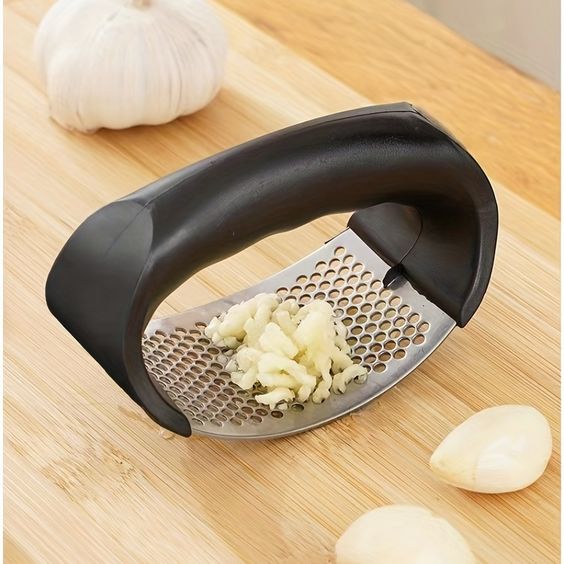Garlic is a staple ingredient in countless dishes across various cuisines, renowned for its robust flavor and health benefits. Yet, the task of mincing garlic can be tedious and time-consuming. Enter the garlic press—a handy kitchen tool designed to make the process quick and effortless. In this guide, we’ll explore the benefits of using a garlic press, how to choose the right one, and tips for its care and maintenance.
Why Use a Garlic Press?
Convenience: A garlic press eliminates the need for manual mincing, saving you valuable time and effort in the kitchen.
Consistency: Achieves uniform garlic pieces, ensuring even distribution of flavor throughout your dishes.
Efficiency: Extracts maximum flavor and juice from each clove, enhancing the taste of your culinary creations.
Ease of Use: Ideal for those with limited knife skills or mobility issues, making cooking more accessible.
Types of Garlic Presses
Traditional Garlic Press
Design: Features a hopper where you place the garlic clove, and handles that you squeeze together to press the garlic through small holes.
Materials: Commonly made from stainless steel or aluminum for durability and ease of cleaning.
Advantages: Simple, effective, and widely available.
Rocking Garlic Press
Design: Consists of a curved, perforated blade that you rock back and forth over the garlic clove.
Materials: Typically made from stainless steel.
Advantages: Easy to clean and doesn’t require as much hand strength.
Electric Garlic Press
Design: Battery-operated or electric, these presses automate the process.
Materials: Usually constructed from plastic and stainless steel components.
Advantages: Perfect for processing large quantities of garlic with minimal effort.
Garlic Slicers and Choppers
Design: These tools slice or chop garlic into thin pieces rather than mincing it.
Materials: Available in plastic and stainless steel.
Advantages: Offers versatility in garlic preparation, suitable for recipes that call for sliced garlic.
Choosing the Right Garlic Press
Material: Opt for stainless steel for its durability, resistance to rust, and ease of cleaning. Aluminum presses are lighter but may not be as long-lasting.
Comfort and Ease of Use: Look for ergonomic designs with comfortable handles that require minimal force. Rocking presses and those with silicone handles can be easier on the hands.
Ease of Cleaning: Dishwasher-safe models save time and effort. Presses with removable parts or integrated cleaners make manual cleaning a breeze.
Capacity: Consider the size of the hopper. Larger hoppers allow you to press multiple cloves at once, ideal for batch cooking.
Tips for Using a Garlic Press
Peeling the Garlic: While many garlic presses claim to work with unpeeled cloves, peeling them first can yield better results and make cleaning easier.
Cutting Larger Cloves: For large garlic cloves, cut them in half to fit them more easily into the hopper.
Maximizing Yield: After pressing, use a knife to scrape off any remaining garlic from the press.
Avoid Overloading: Pressing too many cloves at once can strain the press and result in uneven mincing.
Caring for Your Garlic Press
Cleaning: Rinse immediately after use to prevent garlic residue from hardening. Use a brush or toothpick to clear out any stuck bits.
Dishwasher: Check if your garlic press is dishwasher-safe. Place it in the utensil holder or top rack for best results.
Storage: Store in a dry place to avoid rusting. Hanging it on a utensil rack can keep it within easy reach.
Maintenance: Regularly inspect for wear and tear. Replace any broken or worn parts to maintain optimal performance.
